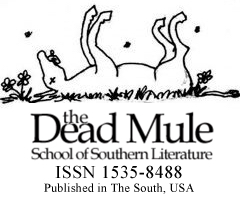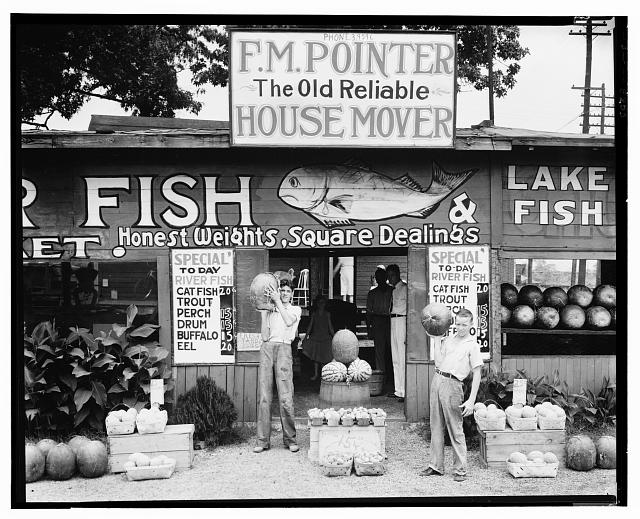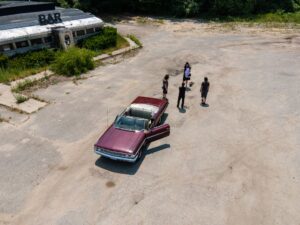An old man she’d never seen had sent her a map. Late in her research the professor had come across the man’s name, and she found where he lived. He was an old man in a home who claimed to know more than he’d ever tell – over the phone he’d rasped that out to her. Then he’d laughed and started to choke. The way he spoke, this is the way she pictured him: white native, longtime shut-in, deathly, dead-on white.
So she had the man’s map, and she was beginning to think she was lost. The man must be mistaken or the place in his mind she needed to get to was gone. Or he was enamored of a lie. Or the man was having, at her expense, a last laugh.
For from where she now found herself she saw nothing, neither house nor grave, that in any way brought her closer to the figure Amy Spain.
One of the martyrs of the cause which gave
freedom to her race was that of a colored woman
named Amy Spain, who was a resident of the
town of Darlington, situated in the rich cotton-
growing district of South Carolina.
—Harper’s Weekly, 30 September 1865
The professor tried to look back where she’d come from, but she could no longer see the field she’d just crossed. It had been a strange gray field, ash gray, in a land, this Pee Dee, that was otherwise parched and needy sand – or rust clay. Now, down into woods, she did seem to be stuck in a Carolina bay, inland, this bay dry, in that most oddly pocked state of all the states of the union.
Earlier, by car, she’d tunneled through walls of pine. Over the Lynches. Through the jarring spectacle of azaleas in bloom. Through tatters of spent flowers of live oak and under maples with buds raw red (and many of the maples partly uprooted). Past the house of worship with bell tower stuck in back. Past cemeteries with a waste of bloom, all plastic, decoration piled high – snuff death. Past the three-cornered field, a ragged field, where for some reason the cotton had never been picked.
She was short of breath. She let herself sink to the floor of the bay, into the pine dust on a mat of long needles. She smoothed out the map in front of her and took from her daypack her notes.
For Amy Spain’s mistaken notion that with the arrival of Union troops and the end of the war she was now to be free and the equal of any white, she was hung.
As Amy Spain stood on the cart under the sycamore at the Darlington courthouse, with the rope around her neck already, the seventeen-year-old proclaimed that she was going now to that place where she’d receive her crown of glory.
The cart, on signal, was driven out from under her. Died, young Amy Spain, with one convulsion.
Springtime, early March. Days of rain, and the streets of Darlington mud. In the air, smoke, burning cotton.
Only days before the death of Amy Spain Union troops had made it to Darlington and told her and the others they were free and had thrown open the doors of a warehouse that held the belongings of Charlestonians of means. The people were told to help themselves. Amy Spain chose a walnut bedstead, mattresses, a fine Brussels carpet, and a leather mailbag.
From Huggins’ store she took a bit of her fair share: ginger, mace, a keg of nails. (Asked what she wanted with a keg of nails, she replied she intended to set up a house of her own and take a white Yankee for a husband.)
At the home of her owner (former owner – so she thought), she stuffed upstairs curtains in her new leather mailbag and picked out, too, sheets and pillowcases and calico. She took up possession of a house in the backyard for her belongings.
Young Master told her she’d better go chop wood, and she told him, do it himself, he’d just better get used to the idea.
And to the white children she’d been nurse to (as their nurse always “uniformly kind and attentive”) Amy Spain cursed, “Damned sons of bitches!” (That not quite the truth, said something much worse, her owner later wrote, after she was dead, disparaging her: eye-servant, traitor with skin of Ethiope.)
The Union force left Darlington for Florence and its railroad.
Confederate troops, Wheeler’s, came through, and they caught the people making new lives for themselves. Whipped them, sent them home. Amy, after her whipping, refused to go. Did she want, an officer threatened her, to be taken back to camp?
“Brother,” she said, called him Brother, “I’d rather go through the gates of hell.”
With that the soldiers arrested her. They tried her, and they sentenced her to death for robbery and insubordination.
When Amy Spain was dead, and she was hauled to her owner’s, she was discovered to be wearing the clothing of the Young Mistress, and a pocket held the gold pencil of the Young Master.
Amy Spain was buried in daylight, not at night like the negroes do, and given proper rites, the owner wrote. At her grave the little white folks wept.
The littlest daughter, as long as she lived (and she lived a long time), remembered she’d put her finger in the deep mark at the neck of the body of Amy Spain.
The professor straightened the note cards, tossed them: the truth at random. By day she’d cut up sheets of words and paste them on the walls of her dwelling, and she’d fill at night her shoes with crumpled words. This was the way to do “to confound evil spirits.”
She’d grown stiff, and she shifted in the needles, and saw then at her ankle through the pants leg she was bleeding again.
In her last visit to the little history library, that strange old depository of rare papers with its closed up rooms and locked cabinets and closed in and winding stair, she hadn’t noticed she was bleeding across an old manuscript, the priceless document of a plantation family. It was only when the attendant came up to her table with another book, and she caught the pale young man’s stricken look, that she glanced down. A paper cut wouldn’t stop, bad sign of her dysplasia. The professor wouldn’t be coming back.
From pine needles now she picked up a last stray photocopy of a picture in a book that described an investigation of one of the mysteries of local history. This was a photo of the path on which the author’s informant had often walked: no photo of the woman herself existed! The woman had died after telling her story.
“ ‘Who will come and go with me?’ “ Amy Spain sang and sang from her jail cell.
The professor struggled up.
She headed across the bay and out and forced herself deeper into the woods. When she came to a body of water, she steadied herself at a tree and stared. It was the darkest water, “a paradise to the lovers of black water.”
She’d cross over on a fallen tree to the next point of land. “Let us cross over the river and rest . . . .” She had lost much of her sense of balance; she took her time on the tree. Swayed. Plaiting. She kept a look on the water. Pine pollen this day yellowed it – “the color yellow a symbol of a contest with the forces of evil.”
The other side came up to her before she was ready, and she was surprised next to see in front of her, not far, grand stone steps. But steps to nowhere and unconnected to any dwelling. She climbed two and sat down. She tried to catch her breath.
Her shoes had yellowed. Out of a crack in the steps termites, long winged and elegant in gray, appeared one by one, and each flew off alone.
She sat so still a mockingbird lit close. It sang and sang the song of another bird. Then it gave up.
Another bird flew down, and the mockingbird flew off. This bird was a small red vulture: cardinal in moult.
A little ribbon of air stirred, carrying over wisteria’s sickening perfume; a nearby heavy drape of white wisteria twisted up and suffocated the trees.
“First day white./ Second day red./ Third day dead.” From the poem “Cotton.”
She was ready to give up.
“Bless the Lord,” Amy Spain cried, “the Yankees have come.”




